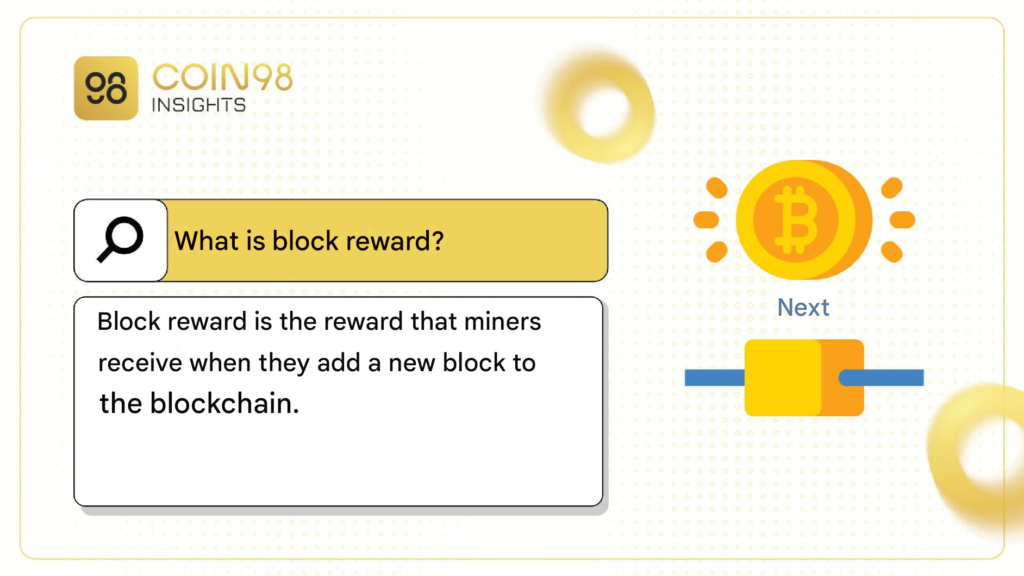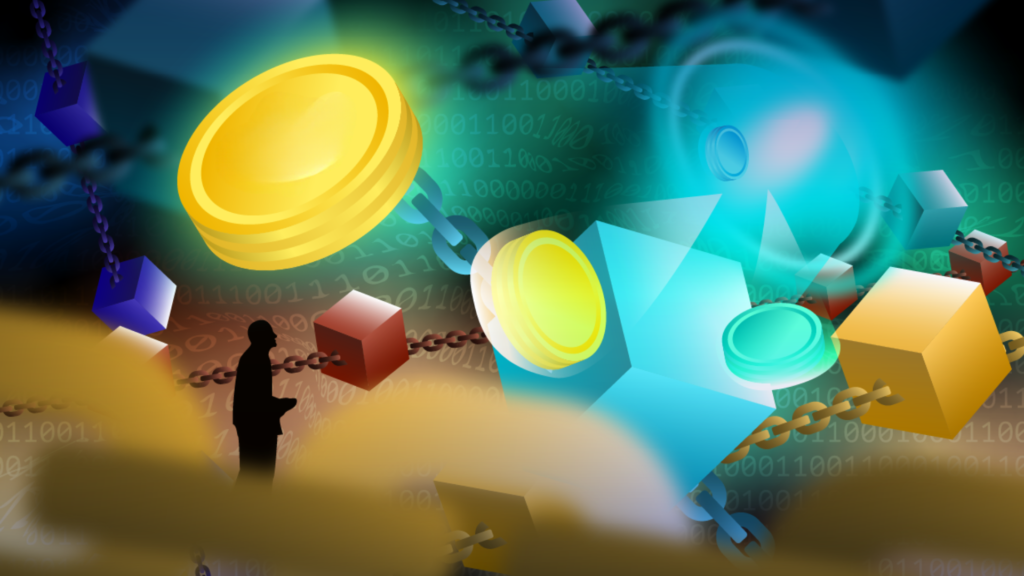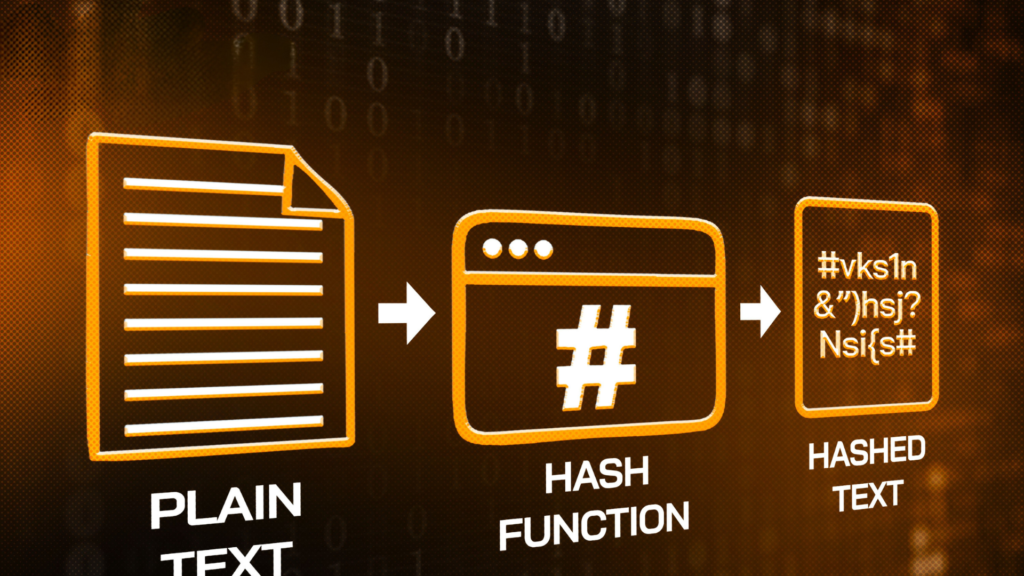One of the important concepts to understand is the block reward. This is the main incentive that motivates miners to participate in securing and validating transactions on the blockchain network.

What is a Block Reward?
A block reward is the reward that miners receive when they add a new block to the blockchain. It is a crucial incentive for participants to contribute to the network, ensuring that the blockchain operates stably and securely.
This reward typically appears in systems that use the Proof of Work (PoW) consensus mechanism. The reward amount varies for each blockchain and changes over time.
For example, in the Bitcoin network, each block initially yielded a reward of 50 BTC, but this number is halved after each halving event.

How Block Rewards Work
In blockchains that utilize the Proof of Work (PoW) mechanism, when miners successfully solve a hash puzzle to create a new block, they receive a reward in the form of newly created Bitcoin and the transaction fees included in that block. These block rewards incentivize miners to invest in computing power to secure the network.
In a PoW system, the main purpose of block rewards is to compensate for the energy and resources that miners expend to solve complex cryptographic problems. This also helps maintain network security by requiring dedication from participants.
Block rewards come from two main sources:
- Fixed reward for creating a new block: This is the main component of the block reward, generated each time a new block is added to the blockchain. It is paid in the blockchain’s native cryptocurrency.
- Transaction fees: These are fees that users pay to have their transactions confirmed. Transaction fees are accumulated and awarded to miners as part of the block reward. While usually a small portion compared to the block reward, their value can increase over time as the number of transactions increases.
One of the important factors in the block reward mechanism is the halving event – an event that cuts the reward in half after a certain period. With Bitcoin, halving occurs every 210,000 blocks, which is approximately every four years. This means that the block reward for miners will be halved each time a halving event occurs, with the aim of controlling the money supply and reducing the rate of inflation.
Here’s an example with Bitcoin:
- Bitcoin’s initial reward when the network launched was 50 BTC per block.
- After the first halving in 2012, the reward was reduced to 25 BTC.
- It continued to decrease to 12.5 BTC after the 2016 halving.
- The reward became 6.25 BTC after the 2020 halving event.
- The reward further decreased to 3.125 BTC at the 2024 halving cycle.
Read more: What is Bitcoin halving? Impact of halving on the market.

When the block reward decreases, miners face a corresponding reduction in mining profits. If the price of Bitcoin doesn’t increase enough to offset the reward reduction, some miners may leave the network, leading to a decrease in hashrate (total computing power).
At the same time, when the cost of mining becomes too high, only large organizations with substantial financial resources can continue to operate. This can lead to centralization, reducing decentralization, which means reduced blockchain security and increased vulnerability to attacks.
In the long term, as the number of new coins generated from block rewards gradually decreases (due to the halving mechanism or supply limits), transaction fees will become the main source of income for miners. This can lead to increased transaction fees on blockchains like Bitcoin, making it difficult for users to conduct small transactions on the network.
Block Rewards and Staking Rewards
It’s important to distinguish between block rewards and staking rewards, as these two concepts are often used interchangeably. While both types of rewards encourage users to participate in network security, their differences lie not only in how rewards are distributed but also in fundamental factors such as money supply management, network security, and the long-term sustainability of the network’s native coin.
Staking rewards appear in Proof of Stake (PoS) or Delegated Proof of Stake (DPoS) systems, where users don’t “mine” blocks using computing power but instead “stake” a certain amount of their coins on the network.
Staking participants are called validators. They are randomly selected based on the amount of coins they stake to verify transactions and create new blocks. Upon completion, validators receive staking rewards, usually a portion of the transaction fees or rewards in the form of cryptocurrency.
Notably, unlike block rewards, staking rewards are not generated through mining but come from transaction fees within the network being redistributed to staking participants.
Here’s a summary of the key differences between block rewards and staking rewards:
- Origin of rewards: In PoW, block rewards are created each time a new block is added to the blockchain, while in PoS, staking rewards come from sharing the transaction fees that users pay when conducting transactions on the network.
- Method of receiving rewards: Block rewards in PoW require miners to solve complex problems to add blocks to the blockchain. Meanwhile, staking rewards are given to validators who have staked a certain amount of coins and participate in transaction verification.
- Purpose: Block rewards aim to encourage miners to invest in computing power and energy consumption to maintain network security. Meanwhile, staking rewards encourage users to hold their coins and secure the network through staking.
Read more: How much do you earn from mining coins in a month?

